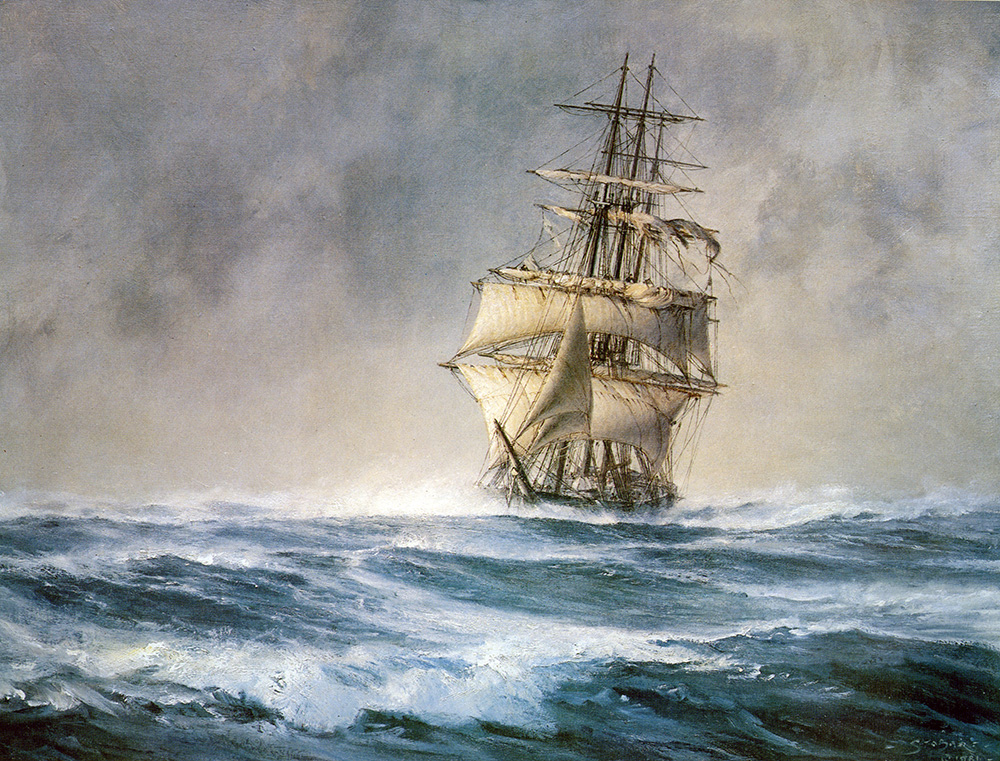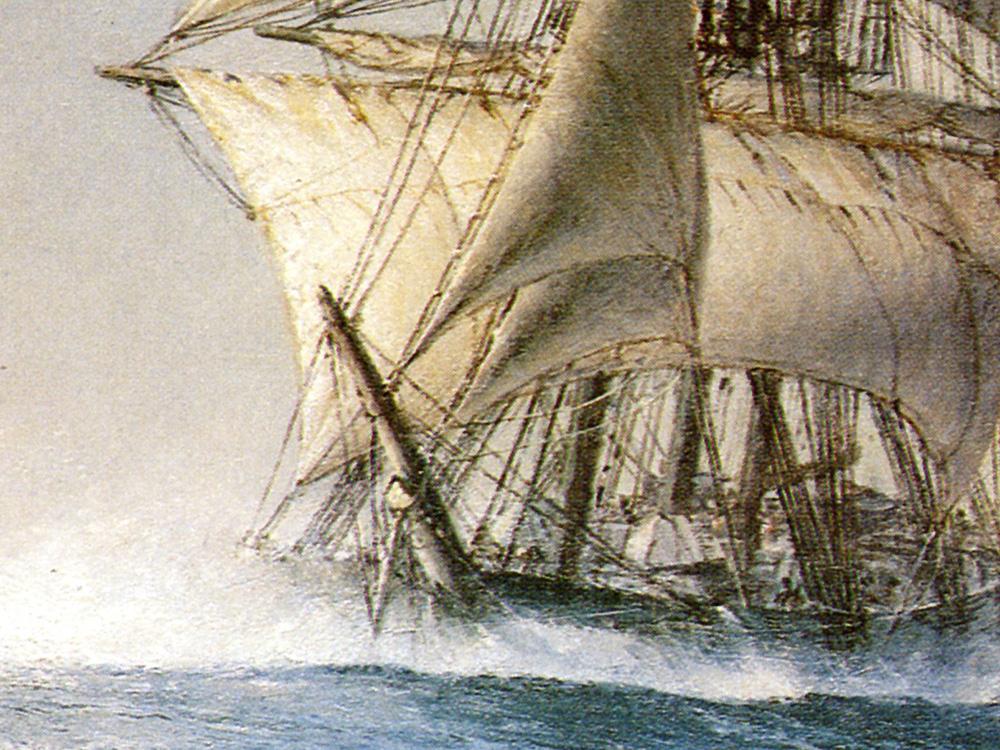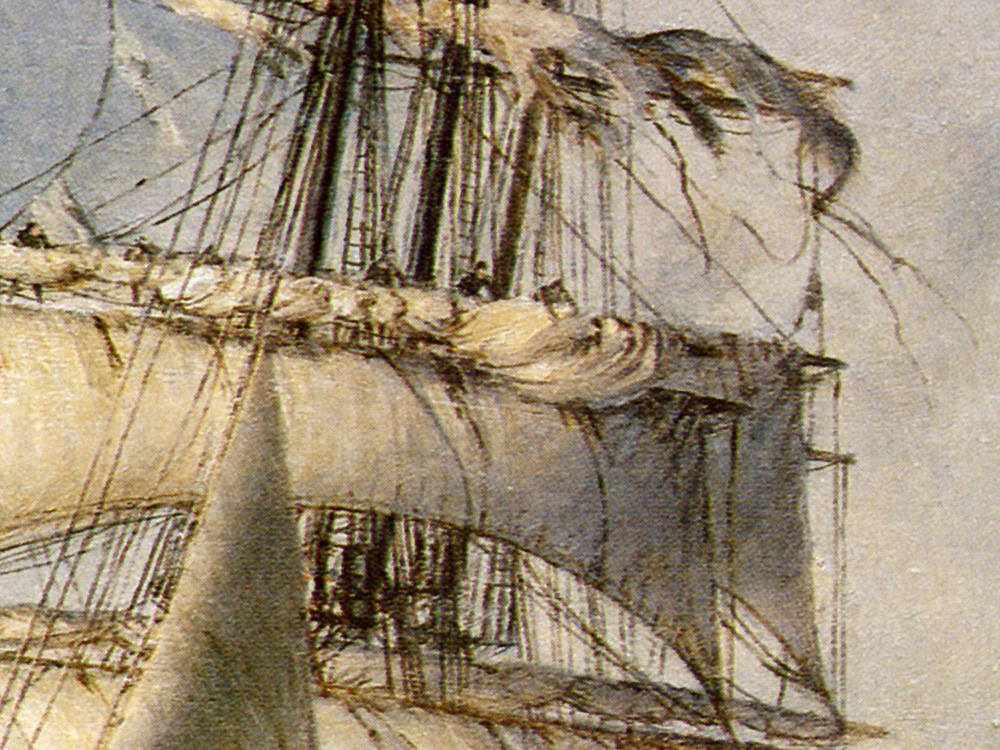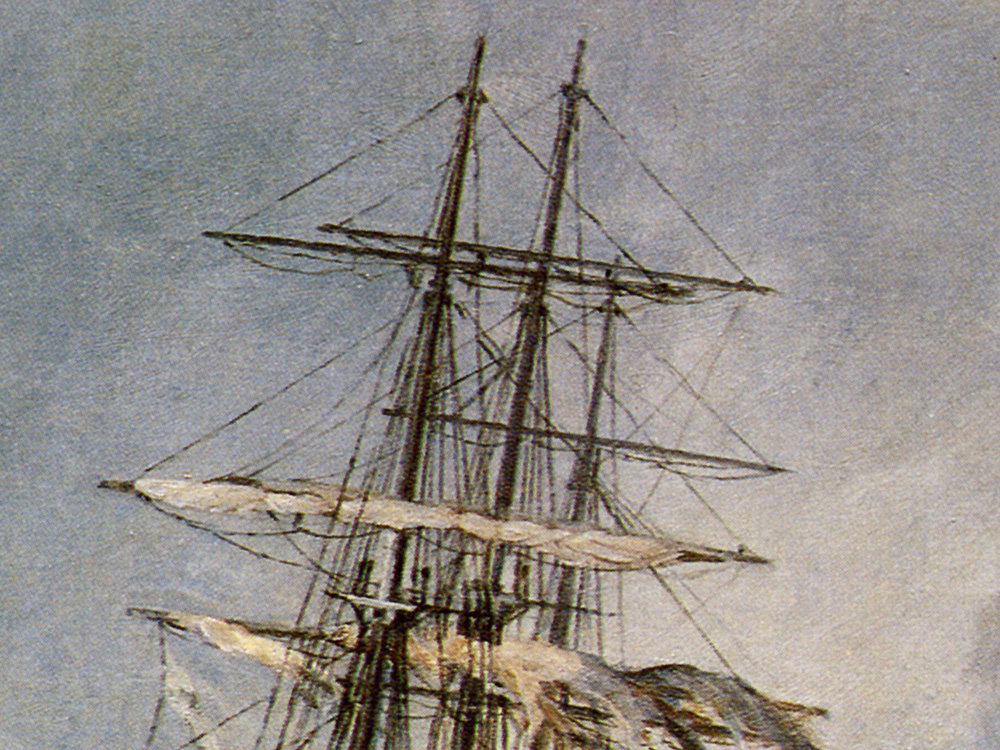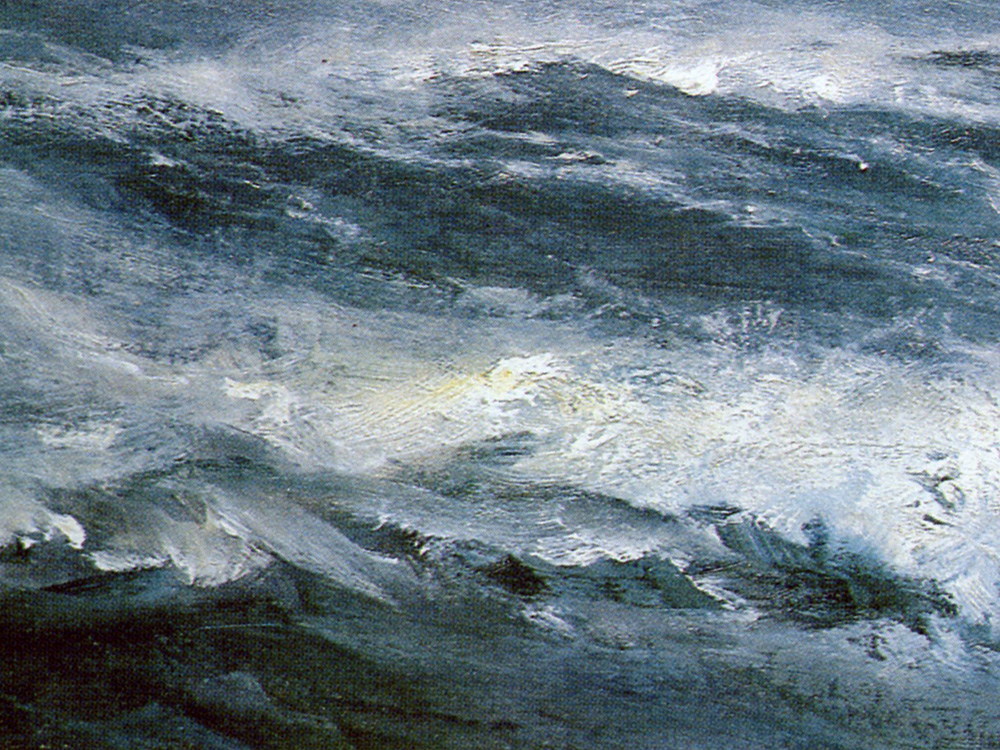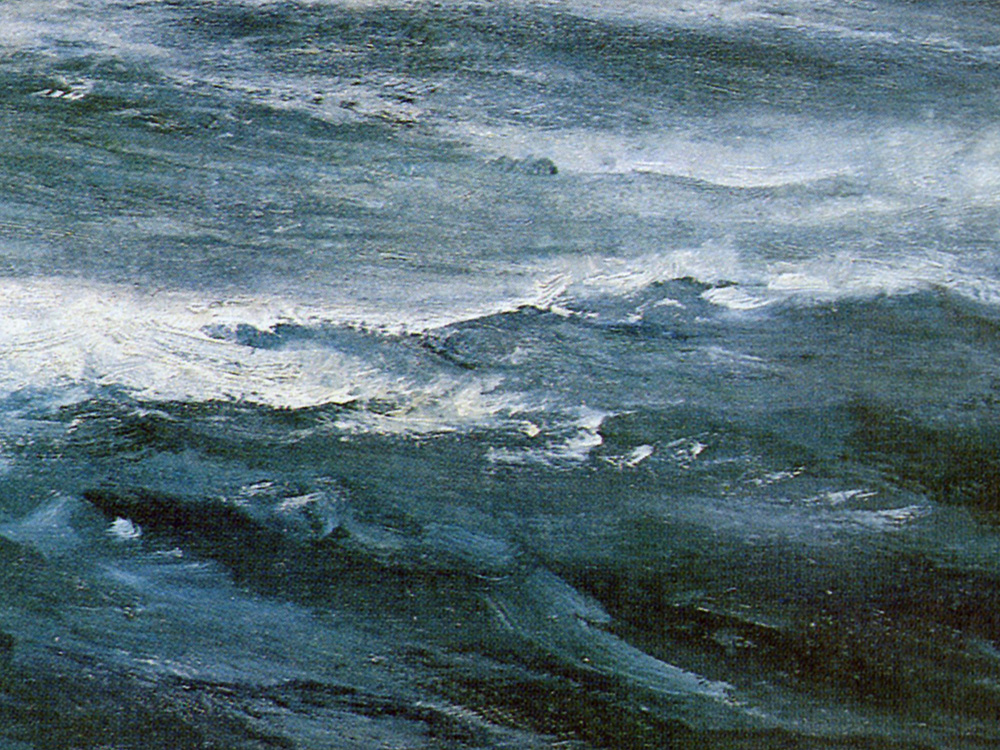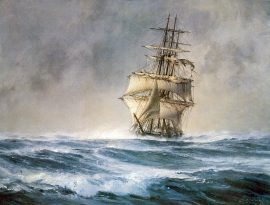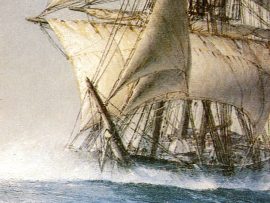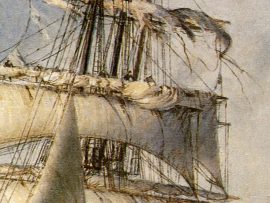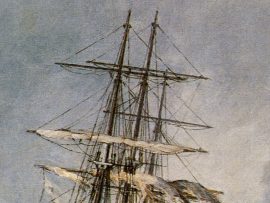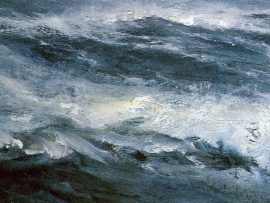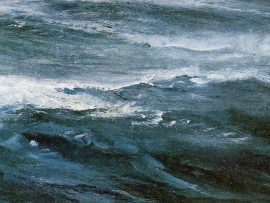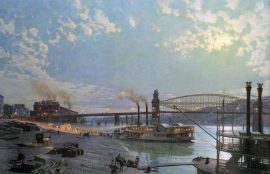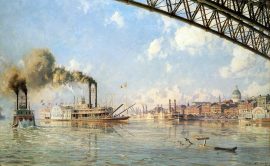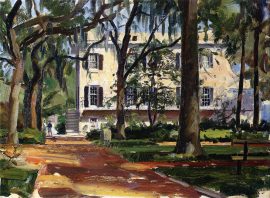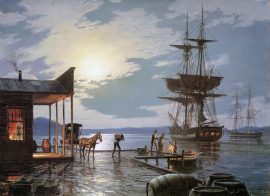The “St. Mary” Approaching Cape Horn
$1,000.00
Down Easters, built in Maine between 1870 and 1900, represented the last American attempt to participate under sail in world trading. Seen in this painting is the Down Easter St. Mary. The big wooden ship of 1,941.7 tons, 240 feet in length, was built at Phippsburg Center, near Bath, by C. V. Minott and launched on March 20, 1890. She then left under tow for New York, where she was fitted out and took on cargo. Her commander, Captain Jesse T. Carver, was a part owner of the ship and had invested most of his savings in her. She sailed from New York on May 23, for San Francisco.
he painting shows the St. Mary on this maiden voyage, battling a sudden squall in the vicinity of Cape Horn. She has been surprised by the passage of a local front with squall winds. The icy blasts have blown the ship’s main upper topsail bodily out of its boltropes and ripped it into shreds of streaming canvas. On the fore upper topsail yard, men are battling to save that sail from a similar fate. They have managed to heave part of the sail onto the yard and lash it there, but another part to larboard still defies their efforts and threatens to tear itself loose from their freezing fingers.
The ship is making heavy weather of it, her bows plunging deeply into the swells, whose tops are ripped off by the force of the wind and sent flying to leeward as driven spume. The St. Mary never reached San Francisco, for off Cape Horn on this maiden voyage she was severely damaged in a collision with the British ship Magellan, which sank with all hands. The crippled St. Mary struggled toward a port of refuge in the Falkland Islands butt drove hard aground at night on Pinnacle Rock, between Brunt and Elephant islands in that desolate group. The following morning her crew launched the lifeboats and reached shore, but Captain Carver refused to leave his ship.
At the Maine State Museum in Augusta visitors can now see a thirty-ton section of the St. Mary’s hull, an impressive sight with its massive timbers and stout planking. This relic was retrieved from the Falkland Islands by a team from the National Maritime Historical Society. They brought it home in 1979 to rest in the capital city of Maine as a lasting symbol of the great role played by generations of Maine men and women in America’s seafaring drama.
| Weight | 6.00 lbs |
|---|---|
| Catalog: | Stobart-170 |
| Artist: | John Stobart |
| Dimensions: | 17" x 23" |
| Edition: | 350 |

